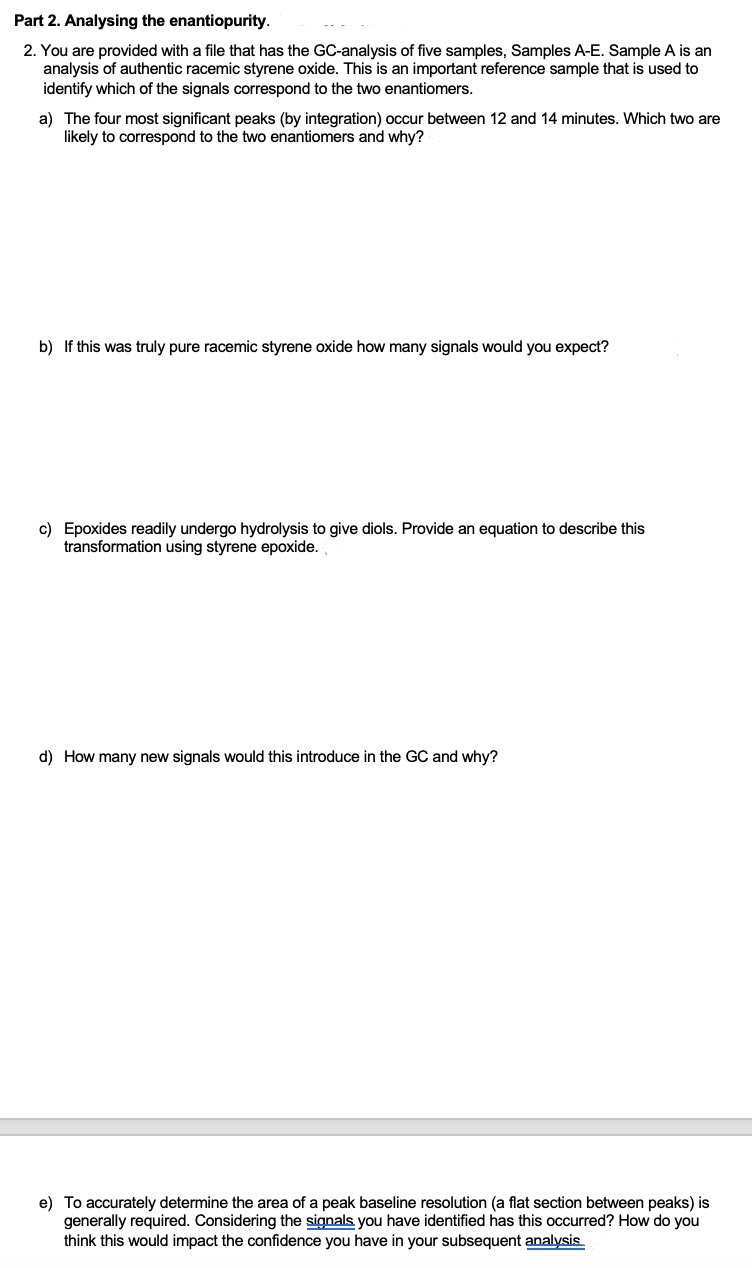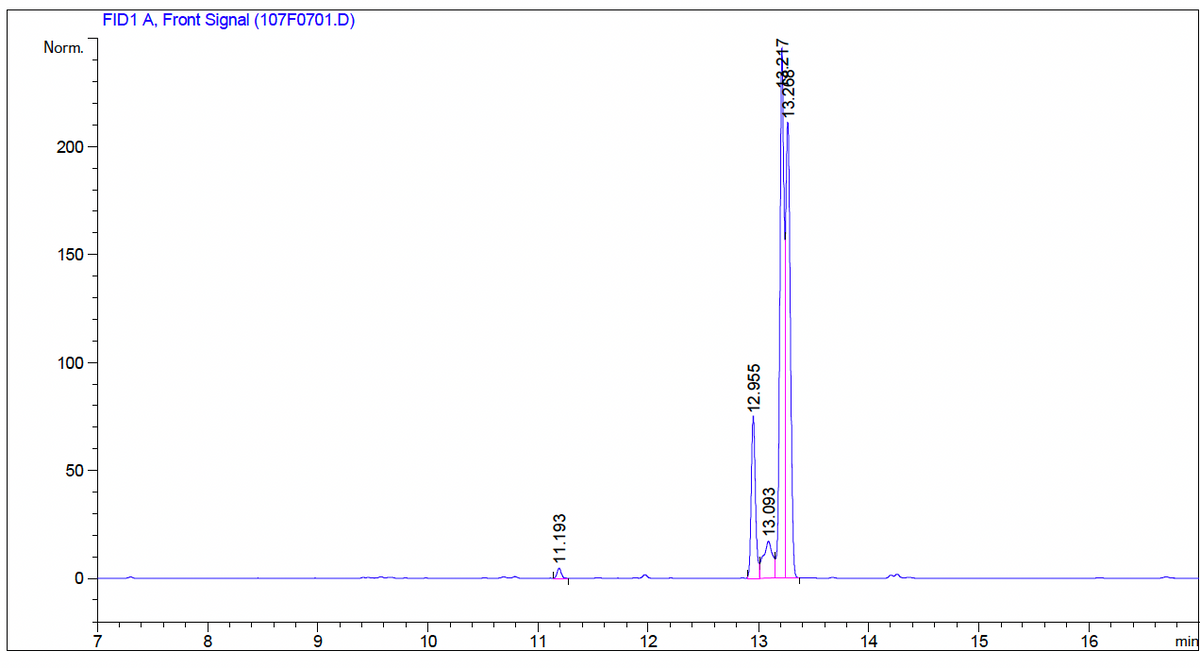Principles of Instrumental Analysis
7th Edition
ISBN:9781305577213
Author:Douglas A. Skoog, F. James Holler, Stanley R. Crouch
Publisher:Douglas A. Skoog, F. James Holler, Stanley R. Crouch
Chapter19: Nuclear Magnetic Resonance Spectroscopy
Section: Chapter Questions
Problem 19.39QAP
Related questions
Question
Given Sample A, need help with part(c). Thank you :)

Transcribed Image Text:Part 2. Analysing the enantiopurity.
2. You are provided with a file that has the GC-analysis of five samples, Samples A-E. Sample A is an
analysis of authentic racemic styrene oxide. This is an important reference sample that is used to
identify which of the signals correspond to the two enantiomers.
a) The four most significant peaks (by integration) occur between 12 and 14 minutes. Which two are
likely to correspond to the two enantiomers and why?
b) If this was truly pure racemic styrene oxide how many signals would you expect?
c) Epoxides readily undergo hydrolysis to give diols. Provide an equation to describe this
transformation using styrene epoxide.
d) How many new signals would this introduce in the GC and why?
e) To accurately determine the area of a peak baseline resolution (a flat section between peaks) is
generally required. Considering the signals you have identified has this occurred? How do you
think this would impact the confidence you have in your subsequent analysis

Transcribed Image Text:FID1 A, Front Signal (107F0701.D)
Norm.
200
150
100
50
7
9
10
11
12
13
14
15
16
min
$11.193
12.955
13.093
13.268-247
Expert Solution
This question has been solved!
Explore an expertly crafted, step-by-step solution for a thorough understanding of key concepts.
Step by step
Solved in 2 steps with 1 images

Recommended textbooks for you

Principles of Instrumental Analysis
Chemistry
ISBN:
9781305577213
Author:
Douglas A. Skoog, F. James Holler, Stanley R. Crouch
Publisher:
Cengage Learning

Chemistry & Chemical Reactivity
Chemistry
ISBN:
9781337399074
Author:
John C. Kotz, Paul M. Treichel, John Townsend, David Treichel
Publisher:
Cengage Learning

Chemistry & Chemical Reactivity
Chemistry
ISBN:
9781133949640
Author:
John C. Kotz, Paul M. Treichel, John Townsend, David Treichel
Publisher:
Cengage Learning

Principles of Instrumental Analysis
Chemistry
ISBN:
9781305577213
Author:
Douglas A. Skoog, F. James Holler, Stanley R. Crouch
Publisher:
Cengage Learning

Chemistry & Chemical Reactivity
Chemistry
ISBN:
9781337399074
Author:
John C. Kotz, Paul M. Treichel, John Townsend, David Treichel
Publisher:
Cengage Learning

Chemistry & Chemical Reactivity
Chemistry
ISBN:
9781133949640
Author:
John C. Kotz, Paul M. Treichel, John Townsend, David Treichel
Publisher:
Cengage Learning